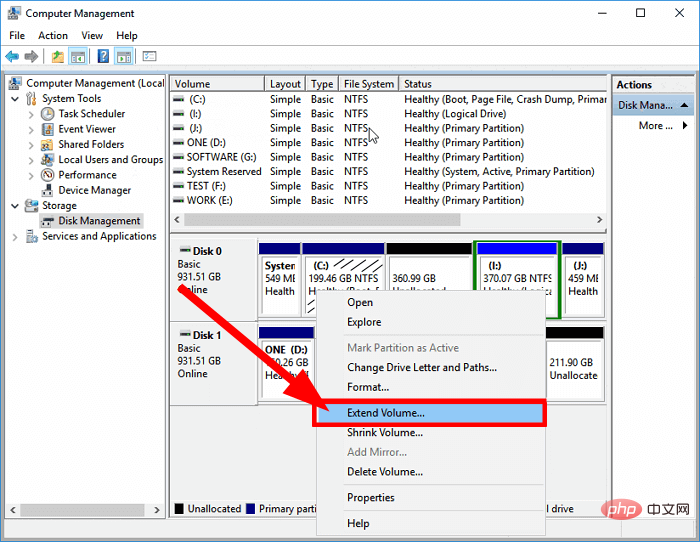php editor Xinyi brings you a detailed article about installing RouterOS and Route commands on CentOS. In this article, we will introduce in detail how to install RouterOS on CentOS system, and gradually analyze the usage of Route command and the meaning of parameters. Whether you are a beginner or an experienced user, this article can help you better understand and apply these technologies. Let’s take a closer look!

CentOS installation RouterOS
RouterOS is an open source routing operating system based on Linux that can be used to build an efficient and stable network environment. The following are the installation instructions for CentOS Steps to install RouterOS:
1. Download the RouterOS installation package. You can download the latest version from the official website.
2. Create a new virtual machine or use an existing virtual machine in CentOS.
3. Upload the RouterOS installation package to the virtual machine.
4. Use command line or graphical interface tools to decompress the installation package.
5. Start RouterOS, which can be configured and managed through the command line or web interface.
Detailed explanation of Route command
Route command is a tool used to view and modify routing tables in Linux systems. It can be used to manage and control network routing. The following are common usages of Route command:
1. View the routing table: Use the "route -n" command to view the routing table of the current system, displaying the destination network, gateway, interface and other information.
2. Add a route: Use the "route add" command to add a new route to the routing table and specify parameters such as the destination network, gateway, and interface.
3. Delete a route: Use the "route del" command to delete a specified route from the routing table.
4. Modify routes: Use the "route change" command to modify the parameters of existing routes, such as gateways or interfaces.
It should be noted that the routing table modified by the Route command only takes effect in the current system. If it needs to take effect permanently, you need to modify the network configuration file or use other tools.
This article introduces the methods and steps for installing RouterOS on CentOS and using the Route command for routing management. These tools are very important for network administrators and can help them achieve an efficient and stable network environment. When using these tools, you need to note that different operating systems and versions may have different commands and parameters, which need to be configured and managed according to the actual situation.
Share: LINUX knowledge
In Linux system, you can use the "ifconfig" command to view the network interface information of the current system, including IP address, MAC address, interface status, etc. If you need to view a certain For a specific network interface information, you can add the interface name after the "ifconfig" command. For example, "ifconfig eth0" can view the information of the eth0 interface.
The above is the detailed content of Detailed explanation of RouterOS and Route commands installed on CentOS. For more information, please follow other related articles on the PHP Chinese website!
 centos用什么命令可查版本号Mar 03, 2022 pm 06:10 PM
centos用什么命令可查版本号Mar 03, 2022 pm 06:10 PM查版本号的命令:1、“cat /etc/issue”或“cat /etc/redhat-release”,可输出centos版本号;2、“cat /proc/version”、“uname -a”或“uname -r”,可输出内核版本号。
 centos重启网卡的方法是什么Feb 22, 2023 pm 04:00 PM
centos重启网卡的方法是什么Feb 22, 2023 pm 04:00 PMcentos重启网卡的方法:1、对于centos6的网卡重启命令是“service network restart”;2、对于centos7的网卡重启命令是“systemctl restart network”。
 centos php怎么安装opcacheJan 19, 2023 am 09:50 AM
centos php怎么安装opcacheJan 19, 2023 am 09:50 AMcentos php安装opcache的方法:1、执行“yum list php73* | grep opcache”命令;2、通过“yum install php73-php-opcache.x86_64”安装opcache;3、使用“find / -name opcache.so”查找“opcache.so”的位置并将其移动到php的扩展目录即可。
 centos 怎么离线安装 mysqlFeb 15, 2023 am 09:56 AM
centos 怎么离线安装 mysqlFeb 15, 2023 am 09:56 AMcentos离线安装mysql的方法:1、将lib中的所有依赖上传到linux中,并用yum命令进行安装;2、解压MySQL并把文件复制到想要安装的目录;3、修改my.cnf配置文件;4、复制启动脚本到资源目录并修改启动脚本;5、将mysqld服务加入到系统服务里面;6、将mysql客户端配置到环境变量中,并使配置生效即可。
 centos 7安装不出现界面怎么办Jan 03, 2023 pm 05:33 PM
centos 7安装不出现界面怎么办Jan 03, 2023 pm 05:33 PMcentos7安装不出现界面的解决办法:1、选择“Install CentOS 7”,按“e”进入启动引导界面;2、 将“inst.stage2=hd:LABEL=CentOS\x207\x20x86_64”改为“linux dd”;3、重新进入“Install CentOS 7”,按“e”将“hd:”后的字符替换成“/dev/sdd4”,然后按“Ctrl+x”执行即可。
 centos 怎么删除 phpFeb 24, 2021 am 09:15 AM
centos 怎么删除 phpFeb 24, 2021 am 09:15 AMcentos删除php的方法:1、通过“#rpm -qa|grep php”命令查看全部php软件包;2、通过“rpm -e”命令卸载相应的依赖项;3、重新使用“php -v”命令查看版本信息即可。
 如何在 CentOS 9 Stream 上安装 NagiosMay 10, 2023 pm 07:58 PM
如何在 CentOS 9 Stream 上安装 NagiosMay 10, 2023 pm 07:58 PM我们的PC中有一个磁盘驱动器专门用于所有与Windows操作系统相关的安装。该驱动器通常是C驱动器。如果您还在PC的C盘上安装了最新的Windows11操作系统,那么所有系统更新(很可能是您安装的所有软件)都会将其所有文件存储在C盘中。因此,保持此驱动器没有垃圾文件并在C驱动器中拥有足够的存储空间变得非常重要,因为该驱动器拥有的空间越多,您的Windows11操作系统运行起来就越顺畅。但是您可以在磁盘驱动器上增加多少空间以及可以删除多少文件是有限制的。在这种情况下,
 centos中ls命令不显示颜色怎么办Apr 20, 2022 pm 03:16 PM
centos中ls命令不显示颜色怎么办Apr 20, 2022 pm 03:16 PM方法:1、利用“vim ~/.bashrc”编辑用户目录(~)下的“.bashrc”文件;2、在文件内添加“alias ls="ls --color"”;3、利用“:wq!”命令保存文件内的更改;4、“exit”命令退出终端后重新连接即可。


Hot AI Tools

Undresser.AI Undress
AI-powered app for creating realistic nude photos

AI Clothes Remover
Online AI tool for removing clothes from photos.

Undress AI Tool
Undress images for free

Clothoff.io
AI clothes remover

AI Hentai Generator
Generate AI Hentai for free.

Hot Article

Hot Tools

Safe Exam Browser
Safe Exam Browser is a secure browser environment for taking online exams securely. This software turns any computer into a secure workstation. It controls access to any utility and prevents students from using unauthorized resources.

SublimeText3 Linux new version
SublimeText3 Linux latest version

SublimeText3 Chinese version
Chinese version, very easy to use

Notepad++7.3.1
Easy-to-use and free code editor

SublimeText3 Mac version
God-level code editing software (SublimeText3)







